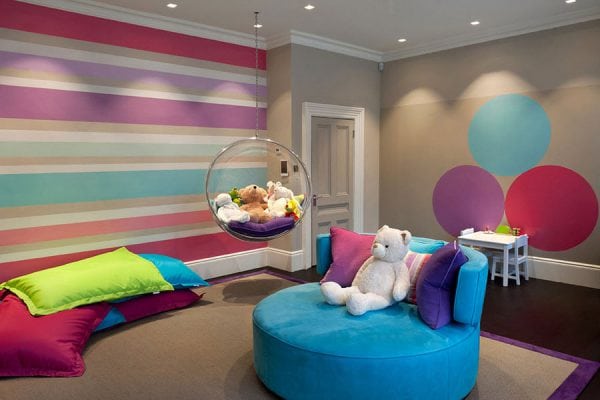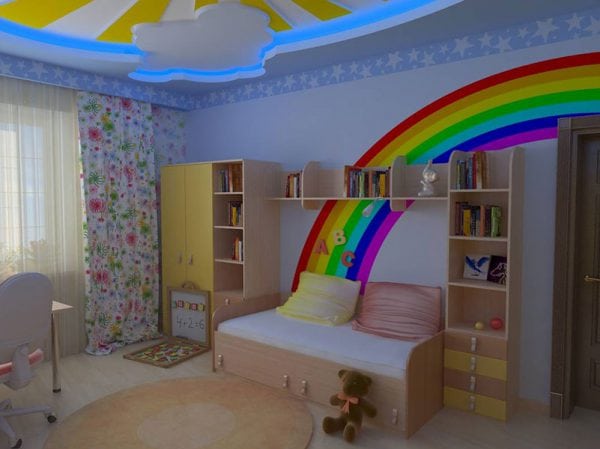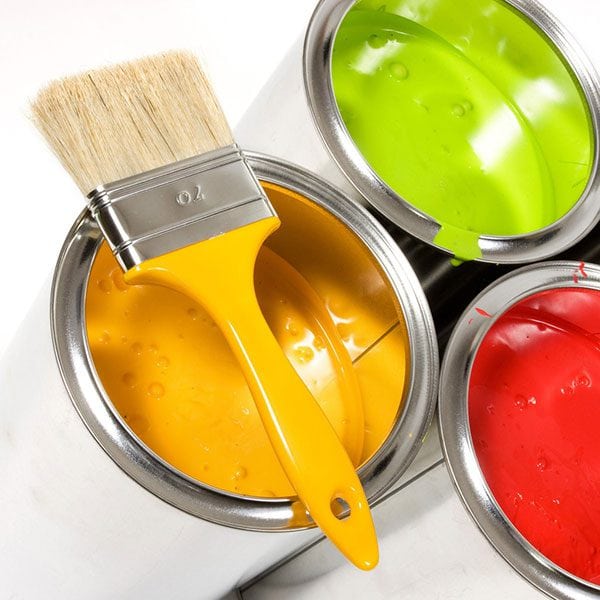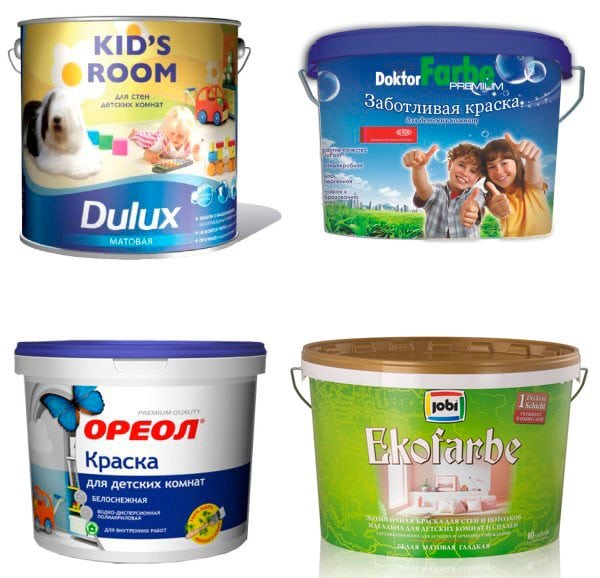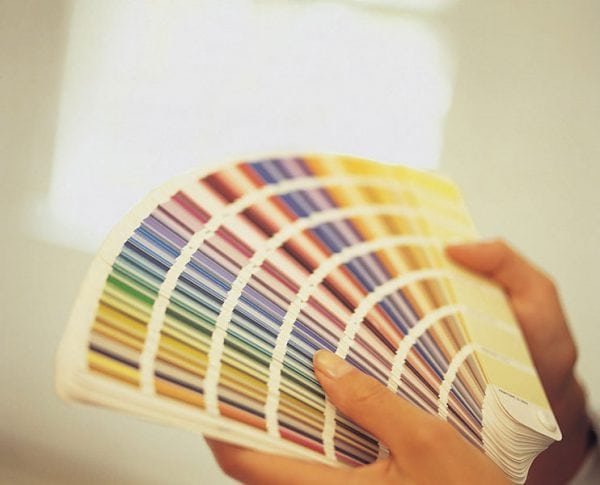The question of the correct design of a children's room worries almost every parent, because this room should meet all available safety indicators. Also, he should only evoke positive emotions in the child.
- The advantages of decorating children's rooms with paints
- Choosing the Right Dye Formulations
- Color selection
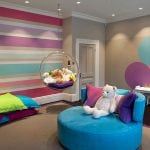
Choosing a wallpaper for these purposes, taking into account all the necessary parameters, is sometimes very difficult. But the paints for decorating a child’s room are great. Why is it worth giving preference to them, how to paint the nursery, so that its color scheme does not adversely affect the psyche of the child, and what type of composition is better to do? Further, we will deal with all these issues.
to contents ↑The advantages of decorating children's rooms with paints
Choosing expensive wallpapers, plastic panels and other materials for wall decoration in children's rooms is simply unprofitable. After all, children are very fond of painting on the walls, driving cars on them, sticking tape or plasticine on them. All this, of course, will ruin any coating.
However, painted surfaces have many advantages in this regard. So, in case of damage, the resulting defect can simply be puttied and tinted. That is, it is not necessary to completely re-make repairs in this case. But, even if it is not possible to mask flaws on such walls with partial painting, then coating them all over again with paint is much easier and cheaper than, for example, re-gluing wallpaper.
In addition, painted walls have other advantages:
- they are less susceptible to mechanical and chemical influences;
- not afraid of moisture and easy to clean;
- have good color fastness;
- Do not create a greenhouse effect;
- do not require the selection of drawings or textures;
- serve longer;
- can have completely different shades (due to the vast number of colors of paints).
The advantages of painted walls do not end there. After all, paints allow you to implement any design ideas in children's rooms. With their help, you can create exclusive drawings on the selected background. It can be flowers in the garden, and cartoon characters, and some characters from computer games or fairy tales. In a word, you can decorate the walls with paints as you wish.
to contents ↑Another equally important advantage is that they can be with 100% environmental indicators. The main thing is to choose the right type.
Choosing the Right Dye Formulations
The construction market is now full of a huge assortment of coloring materials. But due to the fact that not all of them are safe, especially for the children's body, not every type of them is suitable for decorating a room in which the child will constantly stay. The fact is that some emit strong odors and toxic substances.
Here are the main requirements for paints for children's rooms:
- non-toxicity;
- moisture resistance;
- hypoallergenicity;
- lack of tendency to exfoliate after drying;
- good wear resistance;
- inability to emit a smell.
The easiest way to choose the right composition for painting such rooms is to inspect the packaging upon purchase. Manufacturers usually mark paint, which can be used for children's rooms, with a special icon. But this applies only to products from well-known and trusted brands.
Also, when buying paints in order to design children's rooms, you need to pay attention to their type. The safest are water-based formulations. They do not give odors, do not contain toxins, dry quickly, do not absorb dirt and dust, and also perfectly pass steam and air.
Water paints, in turn, are divided into subtypes, each of which has its own advantages:
- Acrylics are relatively inexpensive. The walls painted by them acquire a strong, beautiful matte structure.
- Latex - tend to dry very quickly. The painted walls with these compounds gain a silky, pleasant to the touch surface with high wear-resistant performance.
- Silicone - belong to the new generation of paints. After drying, they form a water-repellent, wear-resistant, vapor-permeable, attractive smooth surface that does not lose its original color even when washed.
Color selection
Scientists have proven that color directly affects the psyche and development of babies. Therefore, the question of his choice for a children's room must be approached with utmost care. In this case, it is necessary to take into account not only the gender and age of the child, but also his character.
For example, walls painted in:
- red - will help cheer up an inactive baby;
- white - activates intellectual activity in children;
- yellow - promotes restless baby to concentrate;
- orange - improves appetite, improves mood and eliminates the fear of being alone;
- blue and green - have a calming effect on hyperactive children;
- pink - dulls leadership qualities, contributing to immersion in dreams;
- purple - refreshes the room and gives it a cozy magical atmosphere.
Whatever color is chosen for the nursery, it should be noted that, ideally, the main tone should be pastel, and not poisonously bright. In such rooms, saturated colors can only be used as individual parts. Otherwise, too bright a shade in any color scheme will strongly “put pressure” on the psyche of the child.
In conclusion, it should be noted that in children's rooms it is recommended to combine different colors, since with this, the room can be divided into zones, for example, into a sleeping place and a play area. However, this must be done correctly, since incorrectly selected colors, poorly combined with each other, instead of benefit, will cause a lot of harm to the child.
The presence of different patterns on a particular background is also welcomed, which should also be created with safe coloring compounds. After all, if they are applied to the walls in accordance with the tastes of the baby, then they will certainly raise his mood, and it has a very positive effect on the health of children. It is especially fascinating for kids when drawings on the walls are applied using a stencil independently by them or together with their parents. This process is very close and helps to establish contact.

